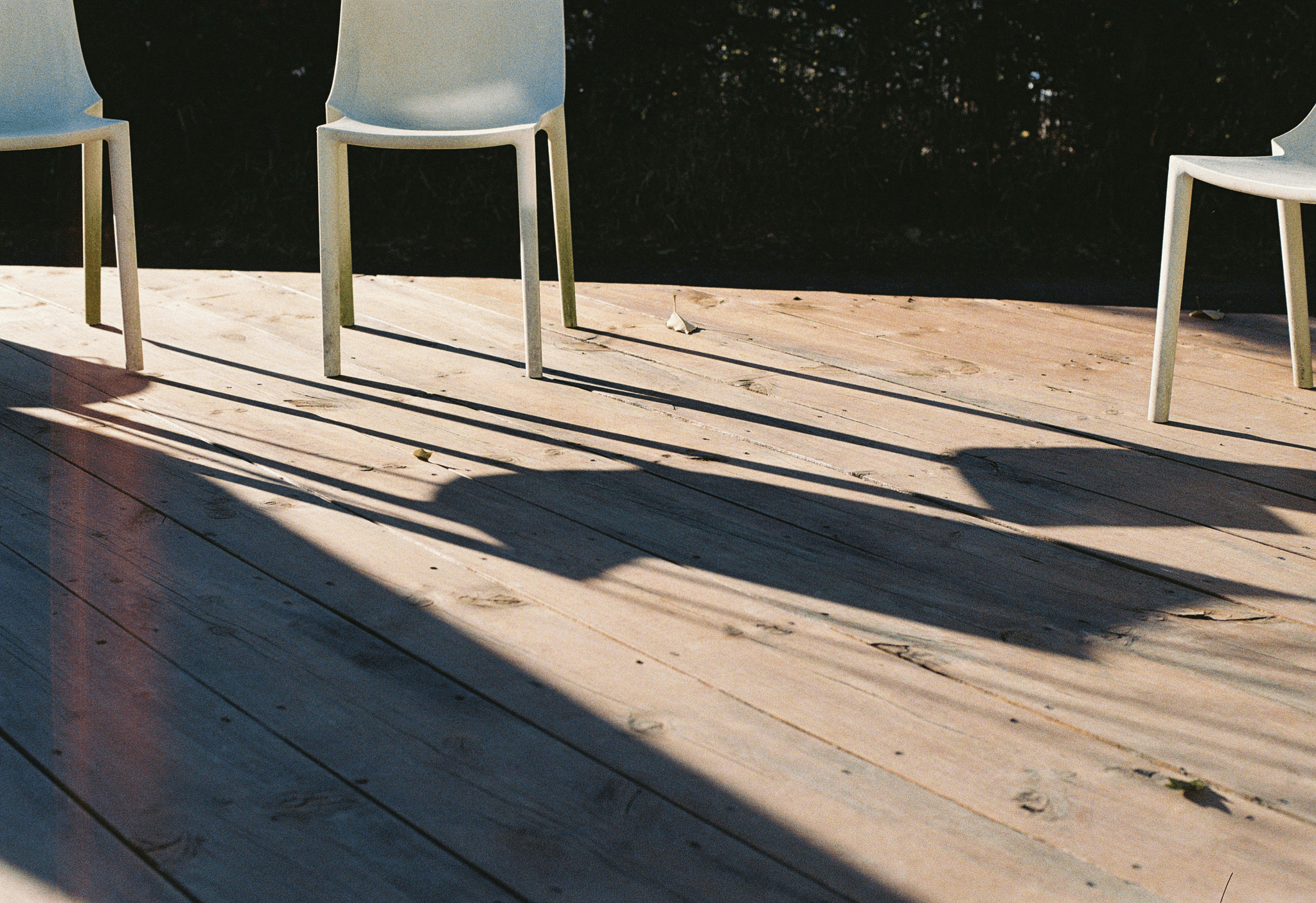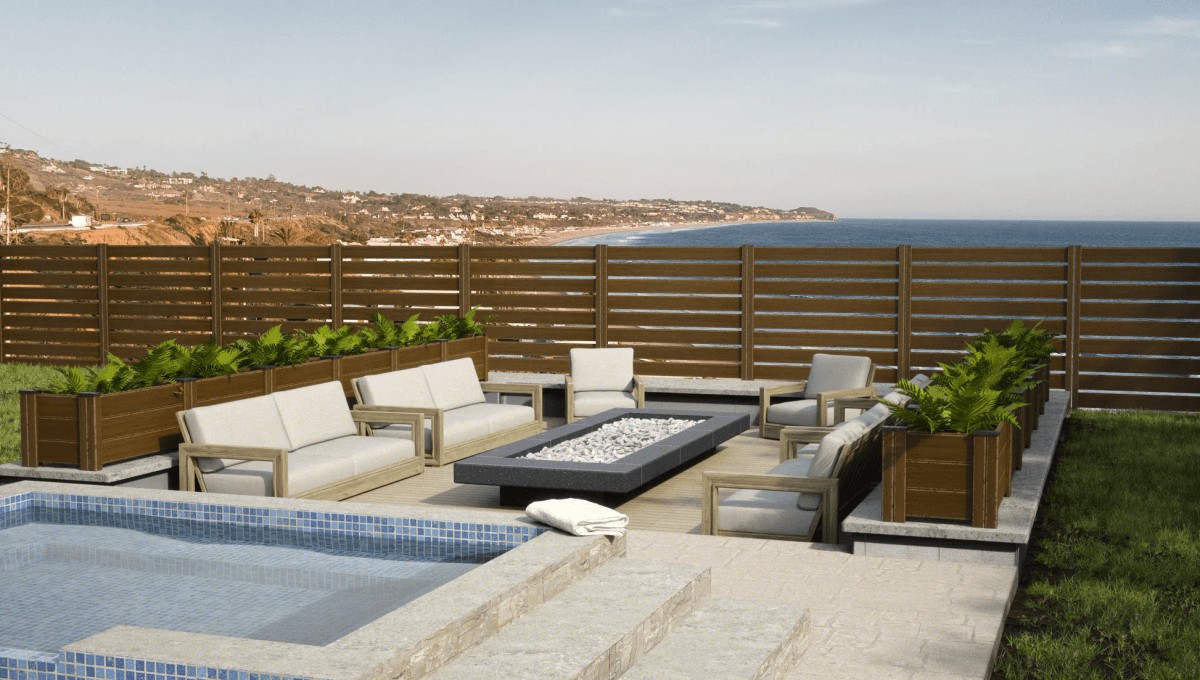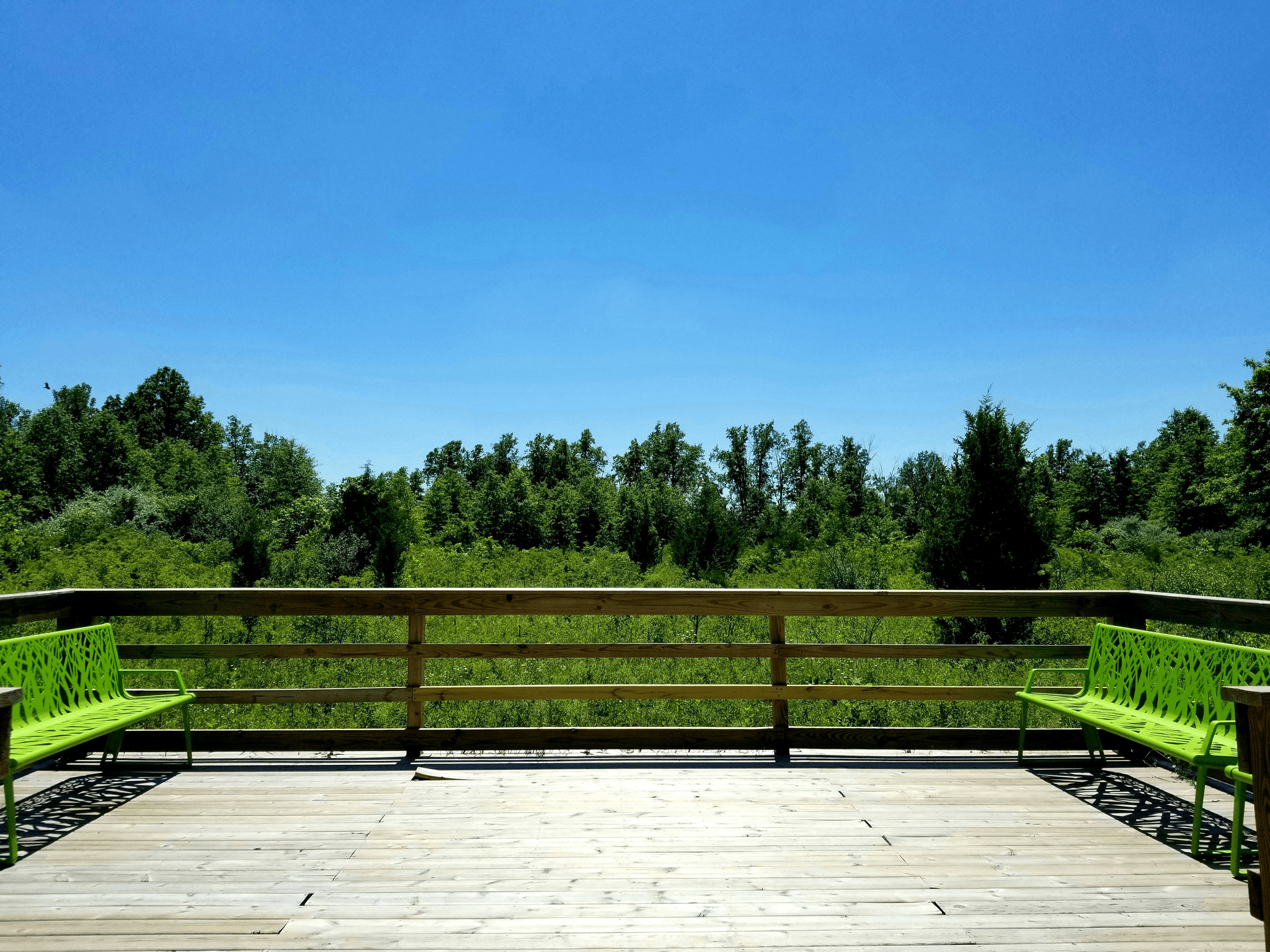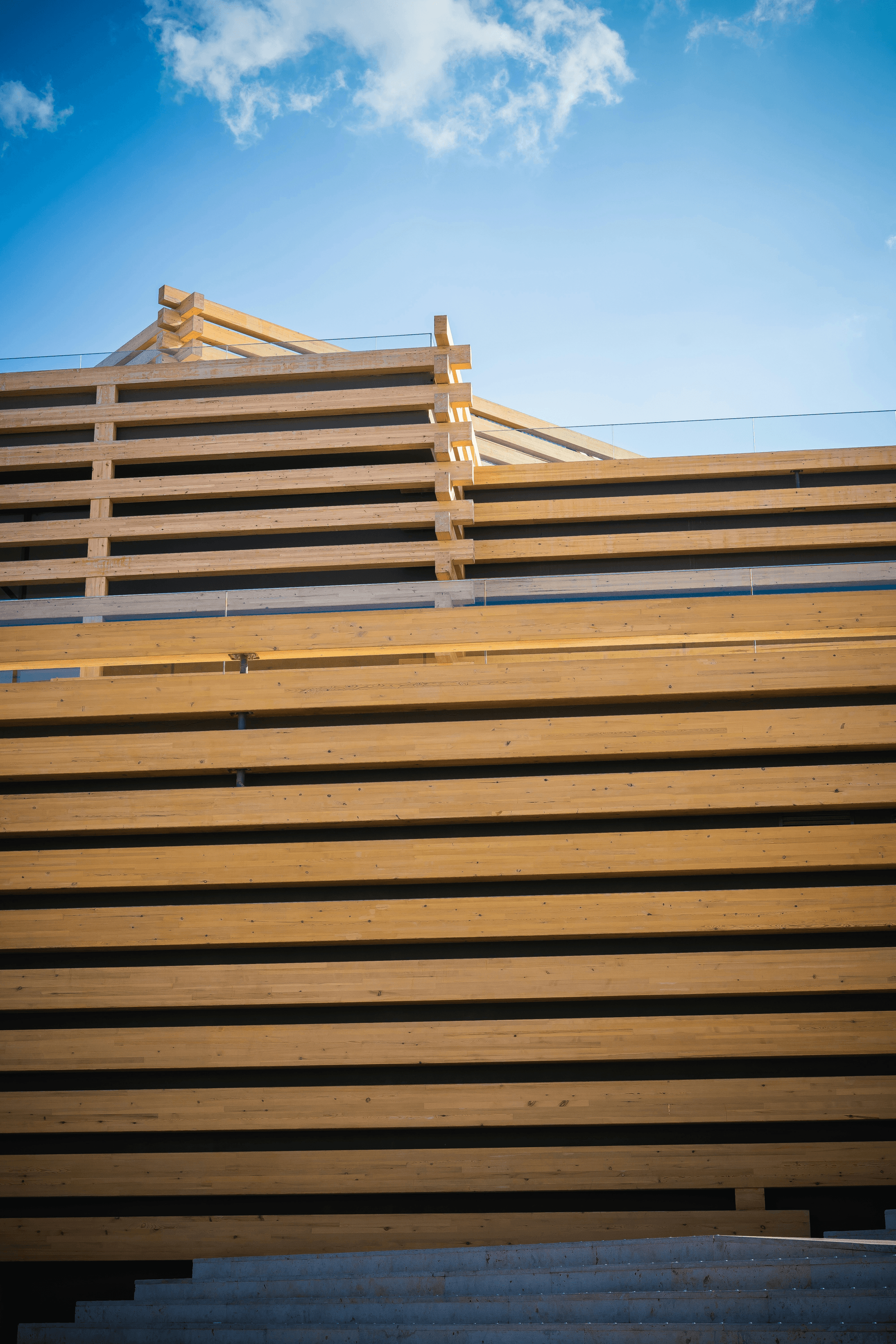Introduction

In the world of outdoor living, natural-looking timber composite has emerged as a game-changer for homeowners seeking both beauty and durability. This innovative material combines the aesthetic appeal of traditional wood with the resilience of advanced engineering, resulting in a composite deck that looks stunning while standing up to the elements. With its growing popularity, many are turning to composite lumber decking as a practical choice for decks and pergolas.
What is Natural-Looking Timber Composite
Natural-looking timber composite is a blend of recycled materials and wood fibers designed to mimic the appearance of real wood while offering enhanced performance. This unique composition allows for a wide range of colors and textures, making it an attractive option for anyone looking to create an inviting outdoor space with minimal upkeep. Unlike traditional lumber, which can warp or splinter over time, composite timbers retain their structural integrity and beauty year after year.
Benefits of Choosing Composite Decking
Choosing composite decking comes with numerous benefits that appeal to both budget-conscious homeowners and those who prioritize aesthetics. One significant advantage is its low-maintenance nature; unlike traditional wood decks that require regular staining or sealing, composite deck boards only need occasional cleaning to look their best. Additionally, these materials are resistant to fading, scratching, and moisture damage, making them ideal for various climates while ensuring your deck railing remains pristine.
Understanding the Composition of Composite Timbers
The composition of composite timbers typically includes a mix of recycled plastic and wood fibers, creating a robust yet lightweight product that outperforms conventional lumber in several ways. This combination not only enhances durability but also contributes to sustainability by utilizing materials that would otherwise end up in landfills. By understanding how these materials come together in composite deck boards, you can appreciate why they are rapidly becoming the go-to choice for modern outdoor spaces.
Overview of Composite Lumber Decking

Composite lumber decking has revolutionized the way we think about outdoor spaces, providing a blend of aesthetics and durability that traditional wood simply can't match. These composite deck boards are engineered from a mix of recycled materials and wood fibers, creating a product that looks like natural timber but boasts superior performance. With the right choice of composite timbers, homeowners can enjoy beautiful decks and pergolas without the constant upkeep that comes with traditional lumber.
Distinction Between Composite and Traditional Lumber
When comparing composite lumber decking to traditional wood, several key distinctions emerge. First and foremost, composite deck boards are designed to resist fading, staining, and splintering, which means they maintain their stunning appearance for years longer than their wooden counterparts. Additionally, while traditional lumber requires regular maintenance such as sealing or staining to protect it from the elements, composite timbers offer a low-maintenance alternative that allows you to spend more time enjoying your outdoor space.
Another significant difference is in durability; composite materials are engineered to withstand harsh weather conditions without warping or cracking. This resilience makes them ideal for various applications beyond just decks—think pergolas or even decorative features in your garden! Ultimately, choosing between these two options often comes down to how much time you're willing to invest in maintenance versus enjoying your outdoor oasis.
Popular Brands of Composite Deck Boards
Several brands have emerged as leaders in the world of composite decking materials, each offering unique features tailored to different preferences and budgets. Trex is perhaps one of the most recognizable names in this market; their innovative products combine beauty with sustainability by using recycled materials in their composite timbers. Other noteworthy brands include TimberTech and Fiberon, both known for their extensive ranges of colors and textures that mimic natural wood grains beautifully.
These popular brands also prioritize customer satisfaction by providing warranties that reflect their confidence in product longevity—often exceeding 25 years! Homeowners can choose from an array of styles when selecting deck boards from these manufacturers, ensuring they find the perfect match for their vision. With so many options available today, it's easier than ever to find high-quality composite deck boards that meet your specific needs.
Aesthetic Appeal of Natural-Looking Designs
One of the remarkable aspects of modern composite lumber decking is its ability to mimic the rich textures and colors found in natural wood while offering enhanced durability. Many manufacturers have invested heavily in technology that allows them to create realistic finishes on their composite timbers; you can find options ranging from deep mahogany hues to light cedar tones—all without compromising on performance! This aesthetic appeal makes it easy for homeowners to achieve a stunning look for decks and pergolas without sacrificing quality.
Moreover, these natural-looking designs lend themselves well not just to standalone structures but also when combined with other elements like deck railing or furniture made from complementary materials. The seamless integration between various components creates an inviting atmosphere perfect for entertaining guests or relaxing after a long day at work. Ultimately, choosing aesthetically pleasing composite deck boards ensures not only visual appeal but also lasting satisfaction with your outdoor space.
Applications of Composite Decking

Composite decking is not just a pretty face; it’s a versatile choice that can elevate any outdoor space. Whether you're looking to create a serene escape or a lively entertainment area, composite timbers offer endless possibilities. From decks and pergolas to patios, the adaptability of composite lumber decking makes it an ideal option for various applications.
Versatility in Decks and Pergolas
When it comes to versatility, composite deck boards shine in both function and design. They seamlessly blend with various architectural styles, making them perfect for traditional or modern decks and pergolas alike. Imagine hosting summer barbecues on your composite deck, surrounded by an elegant pergola draped in climbing vines—it's the kind of outdoor oasis that dreams are made of!
Ideal Uses for Composite Deck Boards
Composite deck boards excel in environments where durability meets aesthetics. These boards are perfect not only for residential decks but also for commercial spaces like restaurants and hotels that want to provide guests with a stunning outdoor experience. The weather-resistant qualities of composite lumber decking make it ideal for poolside areas, where splashes and spills are part of the fun.
Combining Composite Decking with Deck Railing
The magic truly happens when you pair composite decking with stylish deck railing systems. A well-chosen railing can enhance the overall look while ensuring safety without sacrificing style; think sleek lines or classic designs that complement your composite deck beautifully! Plus, using matching materials creates a cohesive aesthetic that ties your entire outdoor space together effortlessly.
Maintenance and Durability of Composite Materials

Low-Maintenance Benefits of Composite Decking
One of the most appealing aspects of composite deck boards is their low-maintenance nature. Unlike traditional wood, which requires regular sealing, sanding, and staining, composite timbers simply need an occasional wash with soap and water to keep them looking fresh. This means more time enjoying your decks and pergolas rather than spending weekends on labor-intensive maintenance tasks.
Moreover, the ease of care extends to cleaning up spills or messes; a quick wipe down is often all it takes! Homeowners can relish in the fact that their composite decking will maintain its aesthetic appeal with minimal effort over time. This translates into significant savings on both time and money—who wouldn’t want that?
Resistance to Weather and Pests
Composite lumber decking is engineered to withstand various weather conditions while maintaining its integrity over years of exposure. Unlike traditional wood that can warp or crack under extreme temperatures or moisture, composite timbers are designed for resilience against rain, snow, sun, and even humidity. This resistance ensures that your outdoor spaces remain safe and visually appealing regardless of what Mother Nature throws at them.
Additionally, one major advantage is their resistance to pests such as termites or carpenter ants—those pesky critters love nothing more than munching on traditional wood! With composite deck boards made from synthetic materials or treated wood fibers, you can rest easy knowing your investment is protected from these unwelcome guests. So go ahead—enjoy those summer barbecues without worrying about unwanted visitors!
Longevity Compared to Traditional Wood
When comparing longevity between composite materials and traditional wood options for decks and pergolas, the difference is striking. Composite deck boards typically have a lifespan exceeding 25 years when properly cared for—far surpassing standard wood's average lifespan of 10-15 years depending on maintenance practices. This durability not only provides peace of mind but also enhances the overall value of your property.
In addition to lasting longer in general use conditions, composite timbers are less prone to common issues like rot or decay caused by moisture exposure over time. Homeowners investing in high-quality composite lumber decking can expect fewer repairs or replacements throughout their lifetime compared to conventional wooden decks—which means more enjoyment with less worry!
Environmental Impact of Composite Timbers

When it comes to decking materials, the environmental impact is a significant consideration for many homeowners. Composite timbers offer an eco-friendly alternative to traditional wood, combining sustainability with durability. By choosing composite lumber decking, you’re not only enhancing your outdoor space but also making a responsible choice for the planet.
Sustainable Sourcing of Decking Material
The sourcing of composite deck boards is designed with sustainability in mind. Many manufacturers utilize recycled materials, such as wood fibers and plastic waste, which reduces the demand for virgin timber and minimizes landfill waste. This sustainable approach ensures that your new decks and pergolas contribute positively to the environment while providing a beautiful outdoor space.
Moreover, many brands are committed to responsible forestry practices when sourcing their raw materials. This means that any wood fibers used in composite timbers come from sustainably managed forests that prioritize replanting and biodiversity. By opting for composite lumber decking, you can rest easy knowing you're supporting eco-conscious practices.
Benefits of Eco-Friendly Products
Choosing eco-friendly products like composite deck boards has numerous benefits beyond just being kind to Mother Earth. For starters, these materials often require less maintenance than traditional wood options, which means fewer chemicals and treatments are needed over time—an added bonus for both your health and the environment!
Additionally, composite timbers are designed to last longer than their wooden counterparts; this longevity translates into reduced resource consumption over time as fewer replacements are needed. So not only do you get a stunning deck railing or surface that enhances your outdoor aesthetic, but you also contribute to a more sustainable future.
Innovative Recycling in Composite Manufacturing
Innovative recycling processes have revolutionized how composite lumber decking is made today. Manufacturers are increasingly using post-consumer plastics—like milk jugs and shopping bags—in their composite deck boards, giving new life to materials that would otherwise end up in landfills. This circular approach not only conserves resources but also significantly reduces carbon footprints associated with production.
Furthermore, advancements in technology allow for more efficient recycling methods that enhance the quality and performance of composite timbers while maintaining environmental integrity. As a result, consumers can enjoy stylish decks and pergolas without compromising on sustainability or quality—talk about a win-win!
In summary, when you choose composite lumber decking over traditional wood options, you're making an environmentally conscious decision that benefits both your home and our planet.
Cost Comparison: Composite vs. Traditional Wood

When it comes to choosing between composite timbers and traditional wood for your outdoor projects, the cost is often a pivotal factor. While the initial investment in composite lumber decking may be higher than that of traditional wood, this is just one piece of the larger financial puzzle. Understanding the full spectrum of costs associated with each option can help you make an informed decision.
Initial Investment in Composite Decking
The upfront cost of composite deck boards tends to be higher than that of conventional lumber, which can catch many homeowners off guard. However, this initial investment reflects the advanced technology and materials used in creating composite decking, designed to withstand the test of time and weather conditions. When you consider that these composite timbers require less upkeep and replacement over time, the price difference starts to make more sense.
Long-Term Savings and Value
While traditional wood may seem like a budget-friendly option at first glance, its long-term costs can quickly add up due to maintenance needs like staining, sealing, and regular repairs. In contrast, composite lumber decking offers significant savings in maintenance expenses since it is designed to resist fading, splintering, and rotting—meaning fewer repairs over its lifespan. Ultimately, investing in a quality composite deck can enhance your property value while saving you money on upkeep.
Factors Influencing the Overall Cost
Several factors come into play when determining the overall cost of your decking material choices—composite or traditional wood alike. The size and complexity of your decks and pergolas will significantly affect labor costs; for instance, intricate designs may require additional work regardless of material choice. Additionally, prices may vary based on local suppliers or brands; some premium brands offer specialized features for their composite deck boards that could influence your final decision.
Conclusion
In summary, choosing the right decking material is crucial for creating a beautiful and functional outdoor space. With various options available, it's essential to weigh the pros and cons of each type, particularly when considering composite timbers versus traditional wood. By understanding your needs and preferences, you can make an informed decision that enhances your decks and pergolas while providing lasting value.
Key Considerations for Choosing Decking Material
When selecting decking material, consider factors such as durability, maintenance requirements, and aesthetic appeal. Composite lumber decking offers a low-maintenance solution that resists weathering and pests while maintaining its stunning appearance over time. Additionally, think about how well the material will pair with other elements like deck railing to create a cohesive outdoor design.
Why Composite Decking is a Smart Investment
Investing in composite deck boards can save you money in the long run due to their longevity and low maintenance costs compared to traditional wood options. While the initial investment may be higher, the reduced need for repairs or replacements makes composite lumber decking an economically sound choice. Plus, with their eco-friendly properties derived from sustainable materials, you're not just investing in your home but also in the environment.
Find Your Perfect Composite Solution Today
Now that you're armed with knowledge about composite timbers and their benefits, it's time to explore your options! Whether you're looking for stylish composite deck boards or planning an entire outdoor renovation with decks and pergolas in mind, there’s something out there just waiting for you. Dive into the world of composite decking today to discover how it can elevate your outdoor experience!
